The Nation’s Largest Collection Of Lighthouse Bloopers, Part 5
Continuing an examination of the series of articles on the lighthouses of the Apostle Islands appearing on the maritime web site, boatnerd.com.
Back to Part 4
Part Five: The Sand Island Lighthouse
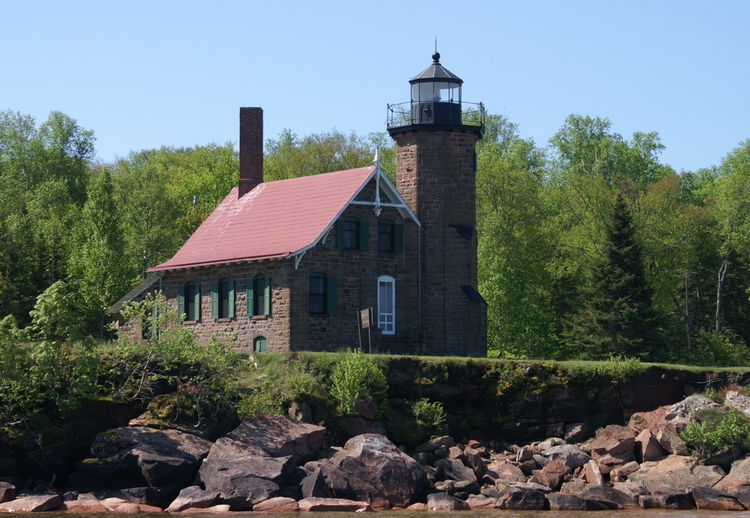
Sand Island Lighthouse
Under discussion:
The Sand Island Lighthouse, by Dave Wobser
Sand Island light marks the western end of the Apostle Islands. The light provided a guide for down-bound vessels into the western channel along the Bayfield Peninsula to the towns of Bayfield, Washburn and Ashland.
Unborn Washburn again! But only two years premature this time, so we’re getting better, and we’ll let this go by.
Some period furniture is in the dwelling, including an original USLHS traveling library.
Every stick of furniture in the building is modern, and the library box is another one of the 1997 replicas.
A Fourth Order polygonal Fresnel lens with 10 sides was placed in the tower, and produced a light 56 feet above Lake Superior.
A misunderstanding of lighthouse terminology seems to be at work here. Mr. Wobser is apparently confusing Sand Island’s ten-sided, fourth-order polygonal lantern -- the windowed chamber at the top of the tower holding the navigational beacon-- with the fourth-order, four-sided Fresnel lens housed within it. The Lighthouse Board’s practice of classing both into “orders” may have led to the confusion.
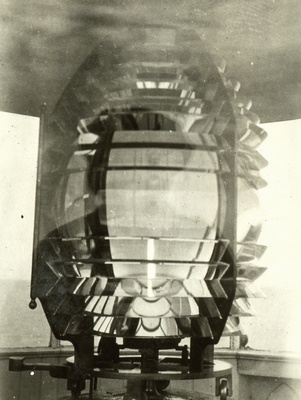
Sand Island Lighthouse Fresnel lens c. 1925-30
A boathouse and breakwater were built 1500 feet south of the lighthouse in a small cove off Lighthouse Bay. These were destroyed in during a storm in 1905 and were not replaced.
The boathouse was damaged in the November 1905 storm, but it was repaired. The keeper's log frequently mentions the boathouse in subsequent years, and there are photographs showing it standing in the 1920s.
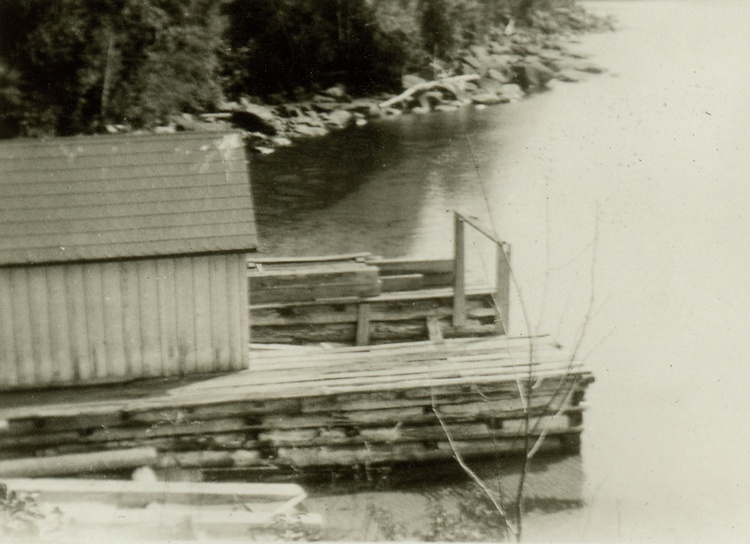
The Sand Island boathouse, c. 1925-30
Only two keepers served at Sand Island. Charles Lederle was part of the construction crew that built the lighthouse and served as keeper from 1881 to 1892. He was succeeded by Emmanuel Luick who served until (t)he light was assigned to Raspberry Island in 1920. In 1933 the light was fully automated.
Mr. Wobser has the keepers’ names right, but then things go out of whack again. The Sand Island lighthouse was “fully automated” in 1921 by means of the Dalén sun valve, a clever contraption that used a magnifying lens to focus the sun’s rays on a thermostat doo-hickey. The sun goes down, the gizmo cools off, opens the fuel supply and light goes on. Sun comes back up, gizmo shuts everything down and saves gas. People were so impressed by this that they gave Gustav Dalén the 1912 Nobel prize for inventing it. Really.
Unfortunately, the gadget was kind of finicky, with the pilot light always blowing out and stuff, so every night the keepers of the nearby Raspberry Island light had to walk a mile to the north tip of their island and look across to Sand Island. If the lamp was out, they had to get in their boat and go fix it.
What did happen in 1933 was that the Lighthouse Service built an ugly steel tower in front of the lighthouse, and put a new and improved acetylene lamp at the top. They got rid of the old Fresnel lens while they were at it; such a pain to keep those things clean.
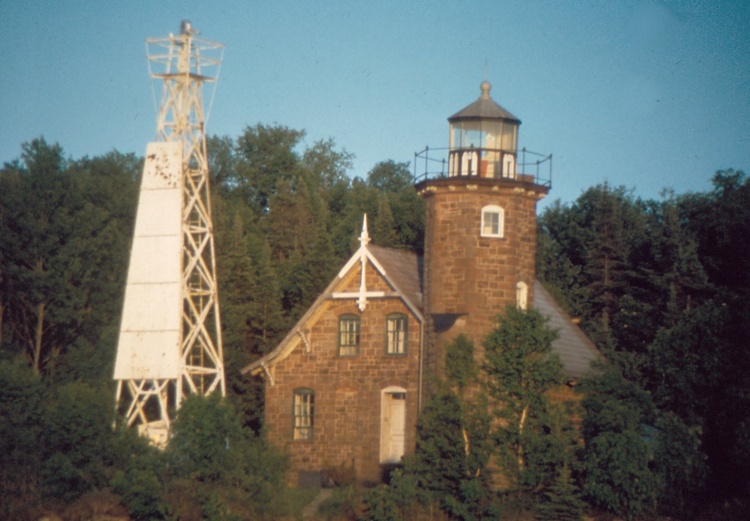
Handsome lighthouse with ugly 1933 tower
Keepers had the company of as many as 100 people who lived in the small village of Shaw, which was located on the eastern bay of the island. The town was abandoned in 1944, but remnants of the town remain not far from the National Park Service dock.
Oh, please!
Sand Island did in fact have a small year-round community, but there was no such place as “the village of Shaw.”
The island’s peak population was probably closer to 75 than 100, primarily immigrant Norwegian fishing families, arriving from about 1890 onward. Their homes and farms clustered along a bay on the island’s eastern shore, a settlement that everyone called— wait for it— "East Bay." The fishermens’ sons and daughters started drifting away in the 1930s, and the last three year-round families moved to winter homes on the mainland in 1944, though for a long time afterward, many would return to the island once fishing season began.
So what’s with the “Shaw” business?
Sand Island’s best-known early settler was a Civil War veteran named Frank Shaw, and the site of his homestead at the island’s southeast corner, about a mile from the East Bay settlement, came to be known as Shaw Point. In 1911, Frank’s son-in-law Burt Hill became postmaster of the island’s brand-new post office—a shed down by his dock--- and chose to name it in the old man’s honor. The post office shut down after only five years, and with that, the name “Shaw, Wisconsin,” which no one ever used except on envelopes, died a quick death.
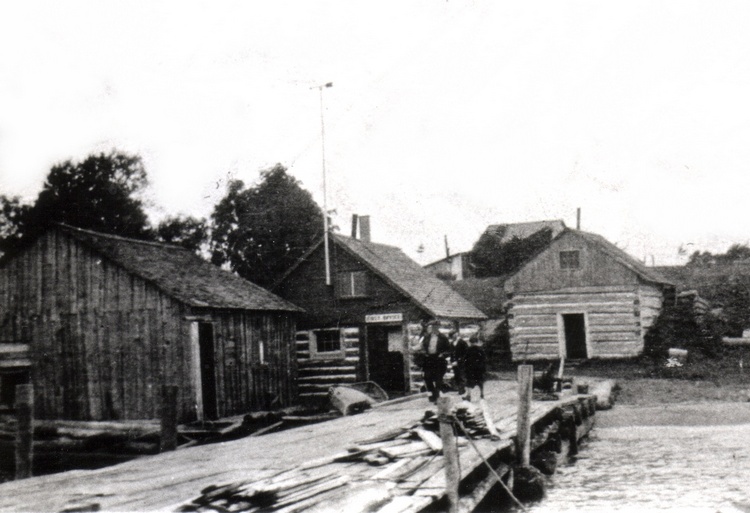
Burt Hill’s dock with the post office in the center
Beginning in 1925, the Sand Island lighthouse dwelling was leased to private individuals for use as a summer home. This continued until the island was purchased as part of the Apostle Island National Lakeshore in 1970.
Off by half a decade. When the Apostle Islands National Lakeshore was established in 1970, the lighthouse tract was already owned by the U.S. Forest Service. (Long story for another day.) It took another five years before the two agencies arranged the swap-- a conveyance without exchange of funds, not a purchase-- and the last private occupant of the lighthouse maintained his lease until then.
Last installment coming up!
Next: The Devils and Gull Island Lights
|